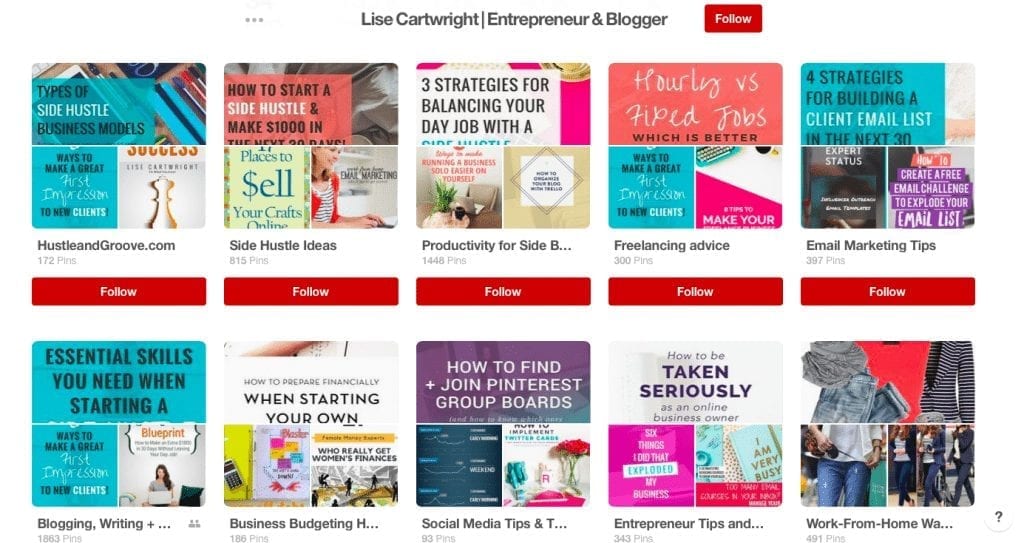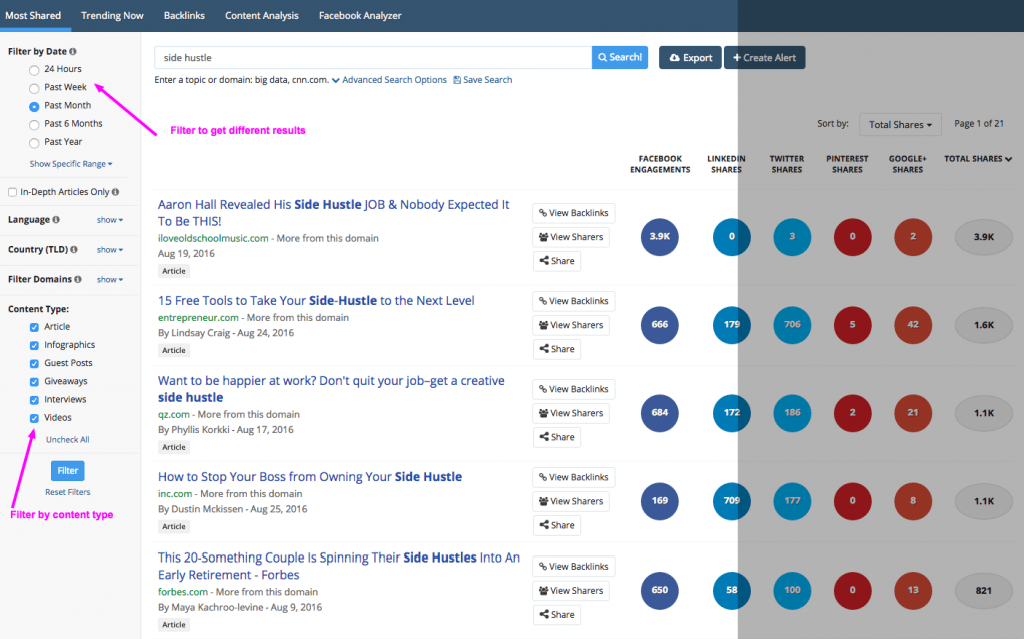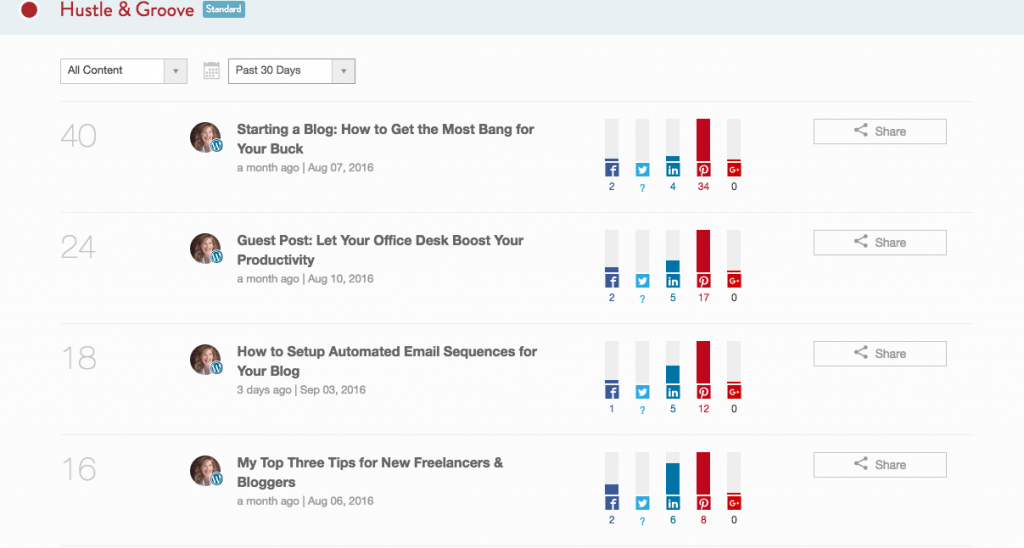Coming up with awesome blog content ideas that your readers will love can feel like pulling teeth at times… no? Just me?
Say it ain’t so… *sad face*
I think you’re lying if you don’t agree with me ;-). But if you are awesome at blog content ideas, then please share your thoughts in the comments below!
If you’re like me, then keep reading…
When you’re writing for your own blog, you get caught up with trying to find the best blog content that your readers want versus writing blog content that you want to write or feel you have to write.
It can be a double-edged sword and a difficult balance to maintain. It can be downright painful at times.
[Tweet “Creating great content doesn’t happen overnight.”]
But you might be like me and try to write blog posts overnight anyway, and then wonder why they suck… yeah, it’s my guilty secret.
Up until a month ago, when enough was enough!
In this post I’m going to show you how you can come up with blog content ideas that your readers will love, that won’t suck, and will make great content for your blog. Because no-one wants average content clogging up their site, am I right?
Table of Contents
Here’s what you’re going to learn:
[bullet_block style=”size-16″ small_icon=”12.png” width=”” alignment=”center”]
- How to write a great blog post
- How to come up with blog content ideas (that readers actually want)
- How to find content for your blog (especially when you’re stuck)
[/bullet_block]
Let’s start at the beginning — coming up with blog content ideas.
How to Come up With Blog Content Ideas
Before you can write a great blog post, you need to know what you’re going to write about.
How?
Well, there are lots of ways to come up with blog content ideas. Whether they’ll be ideas that your audience want to read, that’s the key question to answer.
To help, we’ll explore some of the ways that you can come up with blog content ideas:
#1: Survey your readers
Ask. This is one of the best ways to find out what your readers want you to write about.
Now, if you don’t have a lot of readers, you can apply this to your social media accounts instead.
Jump into some Facebook Groups where your readers might be hanging out and ask the question there too.
And the question you’re asking is… “what one question do you wish someone would answer about xyz” where xyz equals your niche, blog topic etc.
For example, I ask this type of question of new subscribers to Hustle & Groove. The question is: “What’s the #1 biggest side hustle or online business challenge you’re struggling with right now?”
I’ve then got a follow-up question that asks: “What type of content would you like to see more of on Hustle & Groove?” and I provide them with a multi-choice answer, which includes things like; more how-to posts, more training videos, more case studies etc.
You get the idea. This helps me see what people are struggling with and also helps me see what they want more of.
[feature_box_creator style=”1″ width=”700″ top_margin=”5″ bottom_margin=”5″ top_padding=”5″ right_padding=”” bottom_padding=”5″ left_padding=”” alignment=”center” bg_color=”#75d7e1″ bg_color_end=”#0eb9cb” border_color=”” border_weight=”” border_radius=”” border_style=”” font_size=”14″ font_font=”Montserrat” font_shadow=”none”]
Your Task: Create a 1-2 question survey that you can ask your readers to answer. It can be sent via email, shared on your social media accounts or asked in Facebook groups. Keep track of the answers you receive in a spreadsheet.
[/feature_box_creator]
#2: Check out your competitors
This is a good way to find gaps that are either missing from their blog content or missing from your own.
Go and look at your top five competitor’s blogs and see what their popular content is.
Take note of this and see if you can write something similar or better. If it’s something you’ve already covered, see how you can improve on it.
If you’re not sure who your competitors are, do a quick search on Google for “your topic + blogs” and you’ll get a list of blogs that write about that topic.
Jump on Instagram and Facebook too and see what’s happening inside your competitor’s social media accounts too. Are there questions that are being asked that you could answer in a blog post?
[feature_box_creator style=”1″ width=”700″ top_margin=”5″ bottom_margin=”5″ top_padding=”5″ right_padding=”” bottom_padding=”5″ left_padding=”” alignment=”center” bg_color=”#75d7e1″ bg_color_end=”#0eb9cb” border_color=”” border_weight=”” border_radius=”” border_style=”” font_size=”14″ font_font=”Montserrat” font_shadow=”none”]
Your Task: Find your top five competitor’s blogs, Instagram and Facebook accounts and take note of any popular blog posts, Instagram posts and questions being asked. Figure out how you can improve on them or identify any gaps that they aren’t dealing with in their content and write it on your blog.
[/feature_box_creator]
#3: Scope out Quora
If you’re struggling to come up with ideas, jump on Quora.
You can approach this platform in two ways:
- Ask a question
- Respond to questions
If you ask a question, make it relevant to your niche. If you’re responding to questions, make sure you’ve included a link back to your blog.
You can also search on your topic inside Quora and see what comes up. You can use any questions you find to develop blog content ideas and even link to that question if you want to provide even more value to your readers.
Quora is a treasure trove of ideas. If you want to try this on reddit, it’s another way to come up with ideas using a similar approach.
[feature_box_creator style=”1″ width=”700″ top_margin=”5″ bottom_margin=”5″ top_padding=”5″ right_padding=”” bottom_padding=”5″ left_padding=”” alignment=”center” bg_color=”#75d7e1″ bg_color_end=”#0eb9cb” border_color=”” border_weight=”” border_radius=”” border_style=”” font_size=”14″ font_font=”Montserrat” font_shadow=”none”]
Your Task: Jump on Quora, ask a question or answer a question and take note of any responses you get. If you’re looking at questions, take note of any that resonate with your blog and answer them on there too.
[/feature_box_creator]
Ok, those are some of the ways that you can come up with ideas for your blog. But what happens when you struggle to find ideas when you do these exercises?
You do the next exercise.
Finding Content for Your Blog
Now that you’ve got some blog content ideas, you might think you’re all set. But what happens when it comes to that time of the month where you’re building out your blog content for the next month (you’re doing this, right?!) and you can’t come up with a thing to write about?
That’s when you need to look at other ways to find content for your blog.
How?
By trying out some of these different ideas:
#1: Pinterest
I’m a huge fan of Pinterest. I used it to plan my wedding; I’ve got a ton of secret boards where I keep gift ideas and baby-related stuff too. I use it to plan meals and I also use it to find content for my blog.
Yep, it’s a great place to find blog content ideas for your site and if you’re smart, you’ll find ideas that your readers will love too.
Pinterest has become one of my biggest traffic referrers since I started using it for business in April 2016.
So how do you use it to find ideas for your blog? Well, it depends on how you’ve set up your own Pinterest account.
If you’re like me, you’ve got your account set up with a whole bunch of boards that make sense to your business and your readers… and all my personal stuff? That’s what secret boards are for.
If you’ve got your Pinterest account set up to connect with your blog, then it’s a little easier to find ideas for blog content. All you have to do is check out all your boards and see which pins are getting the most repins and hearts.
If you’ve got a Pinterest business account, it’s even easier… you can jump into your analytics and see what pins are doing well. Once you discover this, you can then come up with blog post ideas based on those pins.
[video_player type=”youtube” width=”853″ height=”480″ align=”center” margin_top=”0″ margin_bottom=”20″]aHR0cHM6Ly95b3V0dS5iZS9Qb1FpMGhPNjZwQQ==[/video_player]
Now, no copying. Use pins to inspire, not to brazenly copy. You’ll lose readers faster than a cat high on catnip!
#2: Feedly
Aside from Buffer, I also use Feedly to find content to share on my social media accounts.
Feedly is a great place to find content to share, but it’s also a great place to find blog content ideas too.
Think about the content that you share from Feedly to your social media accounts. Are these blog posts or media that you can repurpose on your own blog? Can you write a follow-up blog post that expands further on the idea?
Take note of the content that you also save from Feedly for later reading. I use Pocket to save all the content I want to read and some of this content is also relevant to my readers.
#3: BuzzSumo
This is a paid product, but you can get some information at the free level too. It’s a great way to check current trends in your niche.
All you have to do is head over to the BuzzSumo website, type in a couple of keywords and see what content comes up. It will show you the most popular content based on the filters you choose… last 7 days, last month, last 6 months etc.
You can also filter by media type, so blog posts only, news articles, videos etc.
If you’re really struggling to come up with ideas, BuzzSumo will definitely help.
#4: Your old posts
If you’re using CoSchedule, you’re gonna love this idea.
Open CoSchedule on your WordPress blog and navigate to the “Top Posts” area. Here you can see what’s done well in the past 7 days, last 30 days, this year, the previous year or all time.
Using those posts, you can expand further on what you’ve already covered. You can create a different angle on a topic, or create another medium that supports the post. Examples like a tutorial video or infographic—maybe a Slideshare would work too.
What if you don’t have CoSchedule? Then check your social sharing plugin stats. I use Sumome and I can see which posts are getting a lot of shares and download a CSV file of these stats as well.
Whatever plugin you’re using for social sharing should also tell you this information.
You could also check your Buffer account to see the stats from there, although it won’t be as good as what you’ll get from your website.
Google analytics is the other option that you could check, but I find it NOT user-friendly. I prefer to use the methods above to check what old posts are doing well.
If you do check Google analytics, you’ll need to navigate to behaviour > site content > all pages to find what you’re looking for.
[feature_box_creator style=”1″ width=”700″ top_margin=”5″ bottom_margin=”5″ top_padding=”5″ right_padding=”” bottom_padding=”5″ left_padding=”” alignment=”center” bg_color=”#75d7e1″ bg_color_end=”#0eb9cb” border_color=”” border_weight=”” border_radius=”” border_style=”” font_size=”14″ font_font=”Montserrat” font_shadow=”none”]
Your Task: Choose some of the options above to find blog content ideas for your blog and add them to your spreadsheet. Or use my free Trello content planning board template. Brainstorm the blog topic idea that you’re going to cover based on the content you’ve found.
[/feature_box_creator]
Content Upgrade: Trello Content Planning Board + tutorial video on how to use it
How to Write a Great Blog Post
Now that you’ve got all these blog content ideas, it’s time to write a great blog post. You want great content on your site, right?
Of course you do. Writing blog posts is easy — writing great blog posts — not so much unless you’ve got a formula to follow that is.
What makes a great blog? The content. Yes, the design and colours are important too, but it’s the content that will keep your readers on your blog.
Once you know how to write a great blog post, it becomes a lot easier to provide your readers with the content they want. Combine it with a great content creation plan like the one I’ve just outlined above, and you’re gonna succeed.
Step 1
The first part of writing a great blog post is about finding your unique voice. Put personality into what you write. No-one is sticking around for vanilla content!
I’d hope by now you’ve got a real sense of my personality if you’ve been hanging out on the blog for any length of time. I like to write conversationally and sometimes, I don’t even use proper words to explain something. Because in real life, that’s how I talk!
I am far from proper 😉
Step 2
The second part in writing a great blog post is understanding who your target audience is and what might resonate with them.
Do they like images? What about gifs? Video? Do they get offended if you swear? Know your audience well and you’ll always write a great blog post… for them.
Step 3
The third part is how you lay out your post and what you include. Rather than reinvent the wheel, I’ll share what Derek Halpern suggests (I loosely follow this type of layout):
Really, that’s all there is to write a great blog post.
Now it’s Your Turn!
Now that you’ve read how to come up with awesome blog content ideas for your readers, and you’ve learned where to find content, and how to write a great blog post, all that’s left to do is to put it into action.
Don’t forget to grab the free Trello Content Planning Board. It will help you plan out your blog content ahead of time. I love it and I know you will too.
Liked this blog post? I’d love it if you shared it too. Click one of the social icons to your left and share on your favourite platform.
Please, and thank you 🙂







8 replies to "How to Come up With Awesome Blog Content Ideas That Readers Will Love"
Excellent advice – super helpful. Thank you Lise – looking forward to checking out more of your site!
You’re so welcome Linda, thanks for checking it out 🙂
Really good and original information. Thanks.
You’re so welcome!
Love the Layout infographic 🙂 Thanks!!!
You’re welcome Tamara 🙂
Great content! Thank you beautiful Lise
Thanks Marcio, glad you enjoyed it!